If you have an older African violet, then you are probably seeing the plant’s stem growing longer … and longer … and longer. It’s a natural part of the African violet’s lifecycle, sure, but now your violet is flopping over. How can you fix a stem that’s too long?
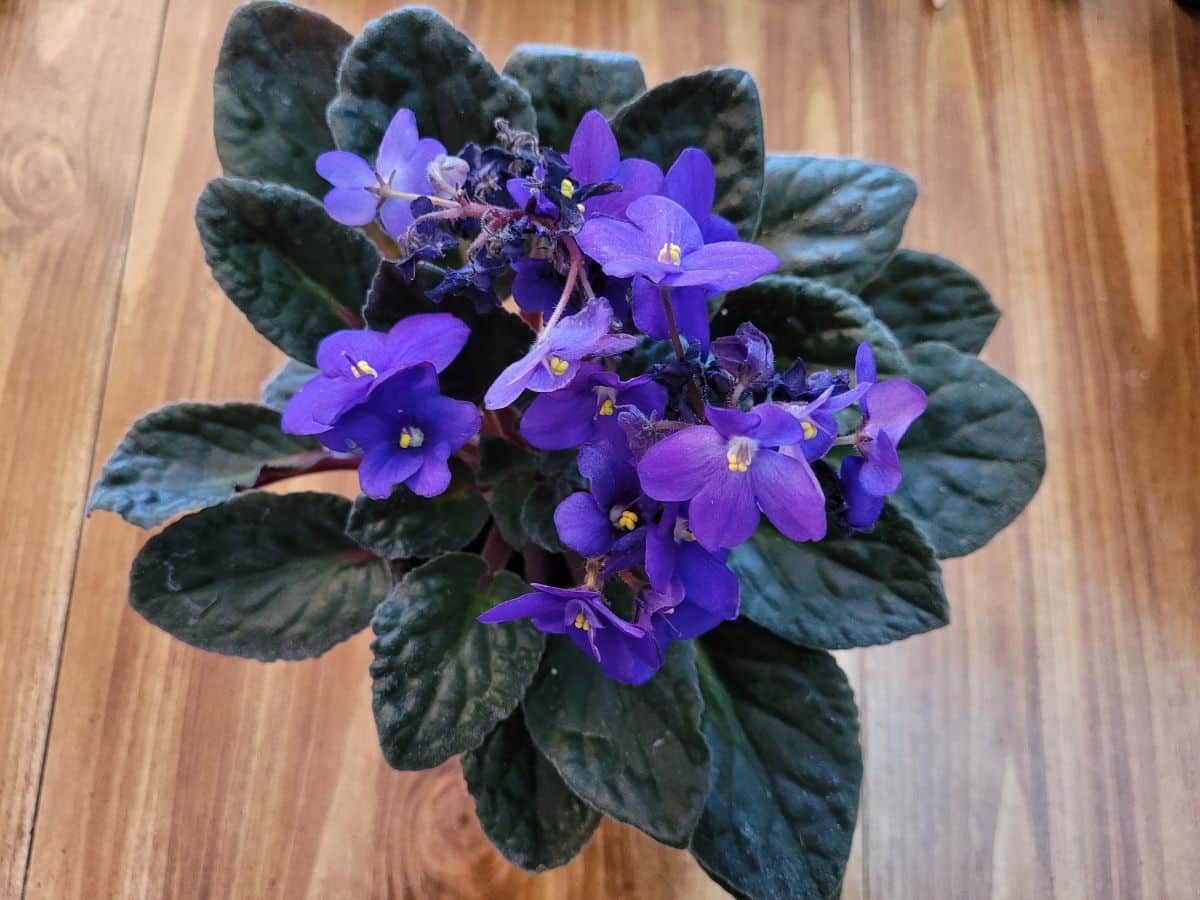
This post will help you fix a long stem on an African violet. These directions will also work on a plant with a broken stem and will rejuvenate plants with root rot or soil mealybugs.
Jump to:
- What Causes Long Necks in African Violets?
- Here's What Not to Do for Long Violet Stems
- How To Fix Long African Violet Stems
- What to Do for a Super-Long African Violet Stem
- Potting the Rejuvenated African Violet
- If Your African Violet Has Root Rot
- Another Method for Rooting an African Violet Plant
- Just in Case, Propagate
What Causes Long Necks in African Violets?
African violets basically consist of a low-growing rosetta of leaves that pop out a lot of colorful blossoms when they’re happy. However, even a rosetta of leaves will still grow upwards.
As old leaves fall off, new leaves grow, and each new leaf makes the short stem a little longer. A long-lived violet eventually ends up with a long gooseneck of a stem – there’s no way around that.
Here's What Not to Do for Long Violet Stems

Will the exposed neck grow roots if you add soil and bury the African violet deeper in the soil?
No. Simply burying the plant deeper is not enough. When the neck is under the soil, it’s constantly exposed to moisture and it rots. Then, the rot ends up in the crown, and the plant dies.
However, there is a way to successfully get the neck to grow roots. This method is more aggressive, but don’t worry. Many growers do this and successfully grow the violets afterward.
How To Fix Long African Violet Stems
Remove the older leaves at the bottom of the rosette until you have about 10 leaves left on the plant.
Snip off all flowers. (Flower production will pull energy away from the roots. Your flower needs to concentrate on those right now.)
Take the African violet out of the pot and get the soil off the roots. Check for rotten roots and any rot in the stem.

Using a knife from the silverware drawer, gently scrape two inches of the stem just below the leaves. Scrape away the scaly-looking sides of the stem and dried tissue to expose the green underneath. Treat it like scraping a carrot until the rough stuff is gone.
In the meantime, get a new flowerpot ready to go with a light, porous potting mix. Choose one that’s about the same size as the previous pot or slightly larger because African violets like a cozy pot. If your plant looks like it’s swimming, definitely choose a smaller size. Your plant will thank you for it.
Then, set the African violet in, add potting soil a handful at a time, and plant the African violet with the scraped part under the soil, but the leaves are high enough so they don’t get waterlogged.
What to Do for a Super-Long African Violet Stem
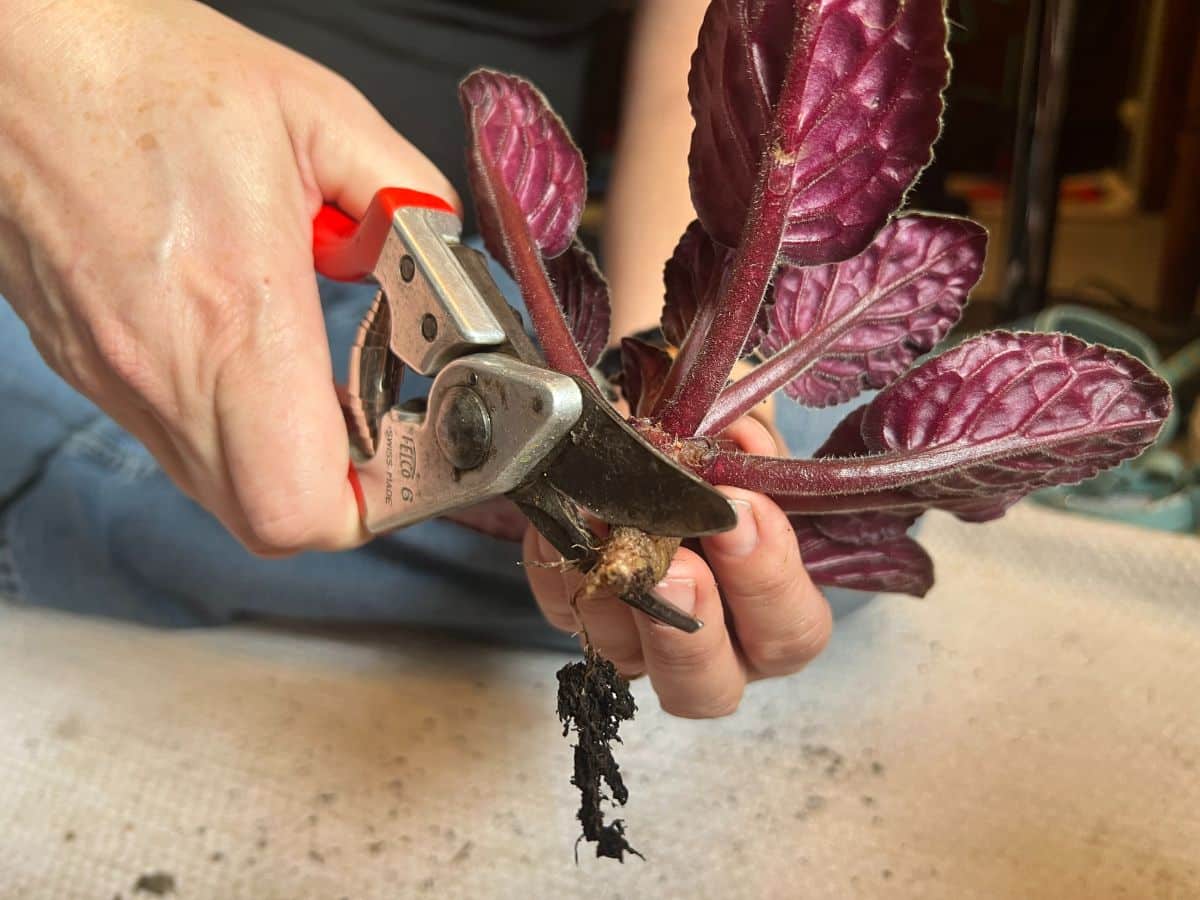
For a really long stem, you’ll have to take drastic steps. This will seem scary, but violets are pretty tough.
If you have more than two inches of stem, then get a pair of clippers and cut the rootball completely off the plant!
Cut the stem at an angle because the roots will grow more quickly at the bottom of an angled cut. Then scrape the bottom two inches, as detailed above.
Set the plant aside to let the stem dry for about a half-hour while you get it a new pot and soil.
Potting the Rejuvenated African Violet
Water the potting soil before you put the plant in.
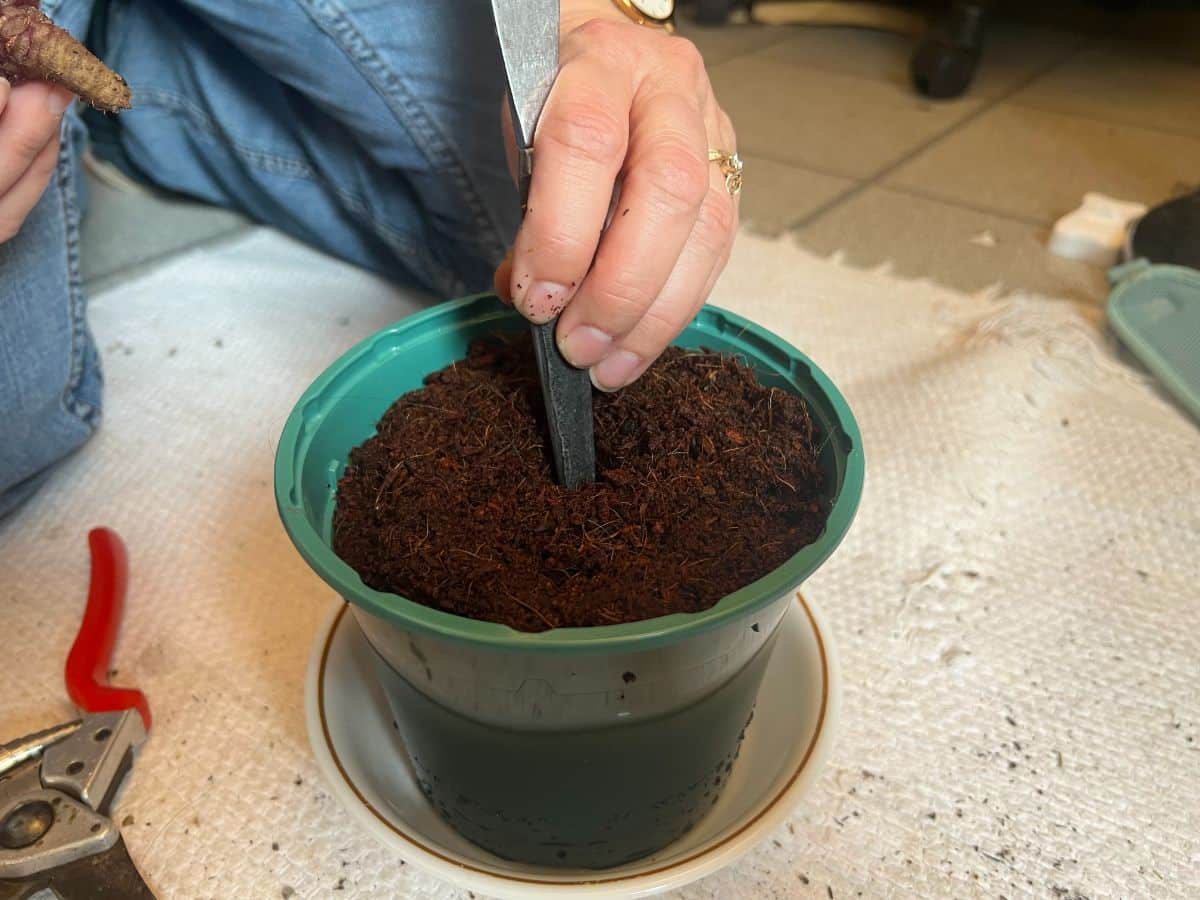
Dibble a little hole into the soil.

Put the stem in, then press the potting soil up against it so it has good contact with the soil.
If the stem is crooked, put it straight into the soil, even though the African violet will look tipsy. The rest of the plant will straighten out until the leaves are level again.
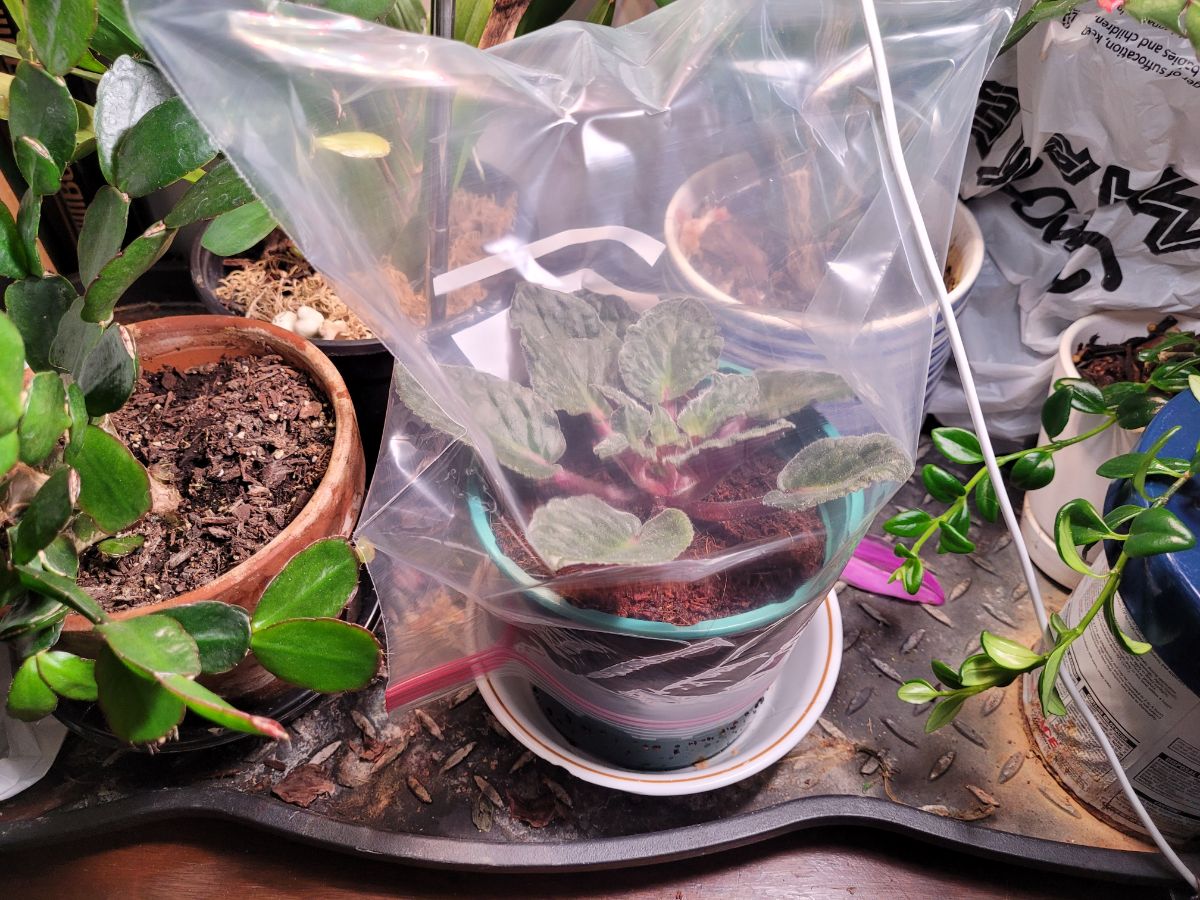
Then place the potted African violet in a clear plastic bag, seal it shut, and place it in a place where it gets bright light but NO direct sun. (Direct sun will turn the bag into an overheated greenhouse and damage the violet.)
Let nature do her magic. The plant in the closed bag won’t need to be watered.
In about four to six weeks, the plant should start putting out new growth. When this happens, slowly open the bag over two days to acclimate your African violet to the lower humidity in your house. After that, put her back with the other plants and enjoy!
If Your African Violet Has Root Rot
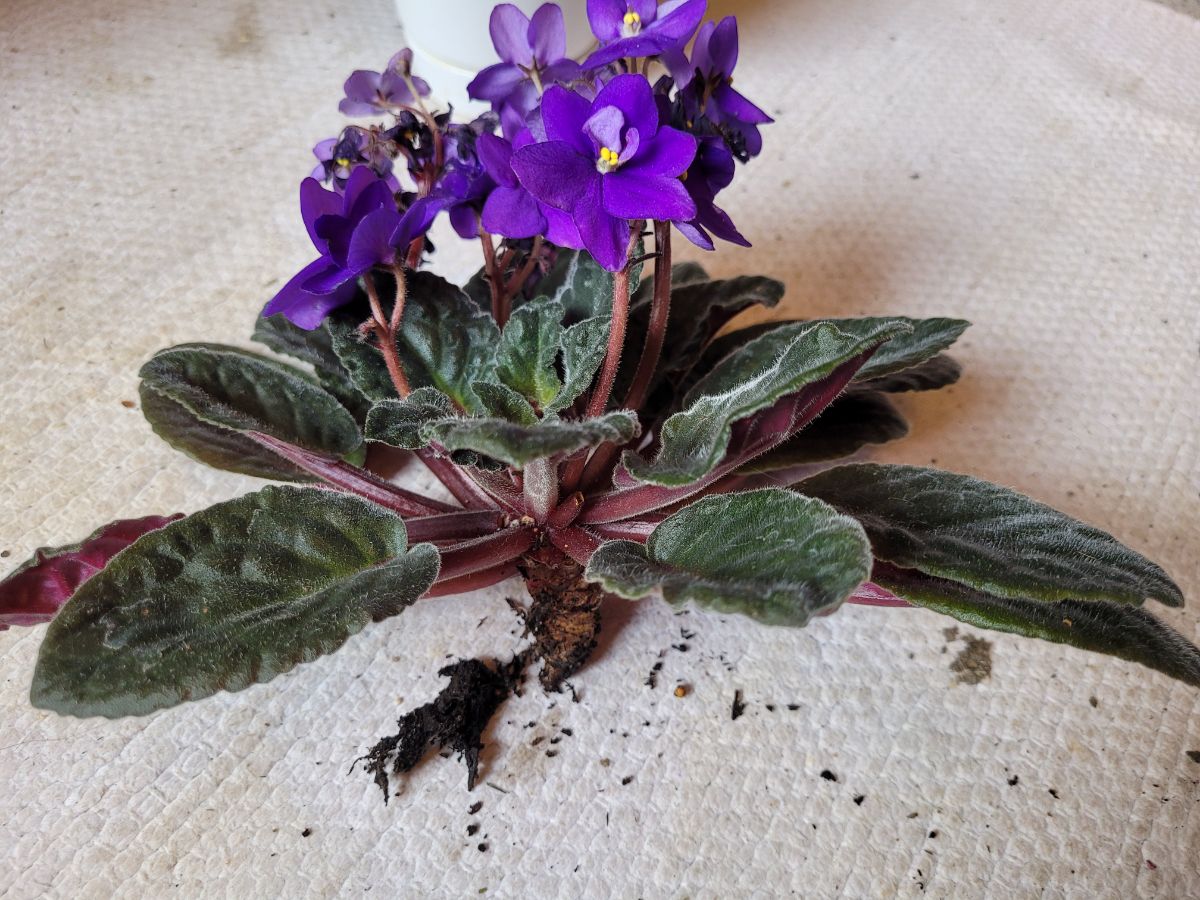
My African violet looked healthy enough, but as soon as she flowered, the blossoms would wither and die. When I took it out of the pot to check on it, I found that the bottom of the stem had withered and died. The only thing keeping the plant alive was a single root that had grown out above the dead stem!
This is caused by root rot, and it’s caused by a pot having too much water that wouldn’t drain, or your potting soil is too heavy for the plant. (African violets prefer light soil.)
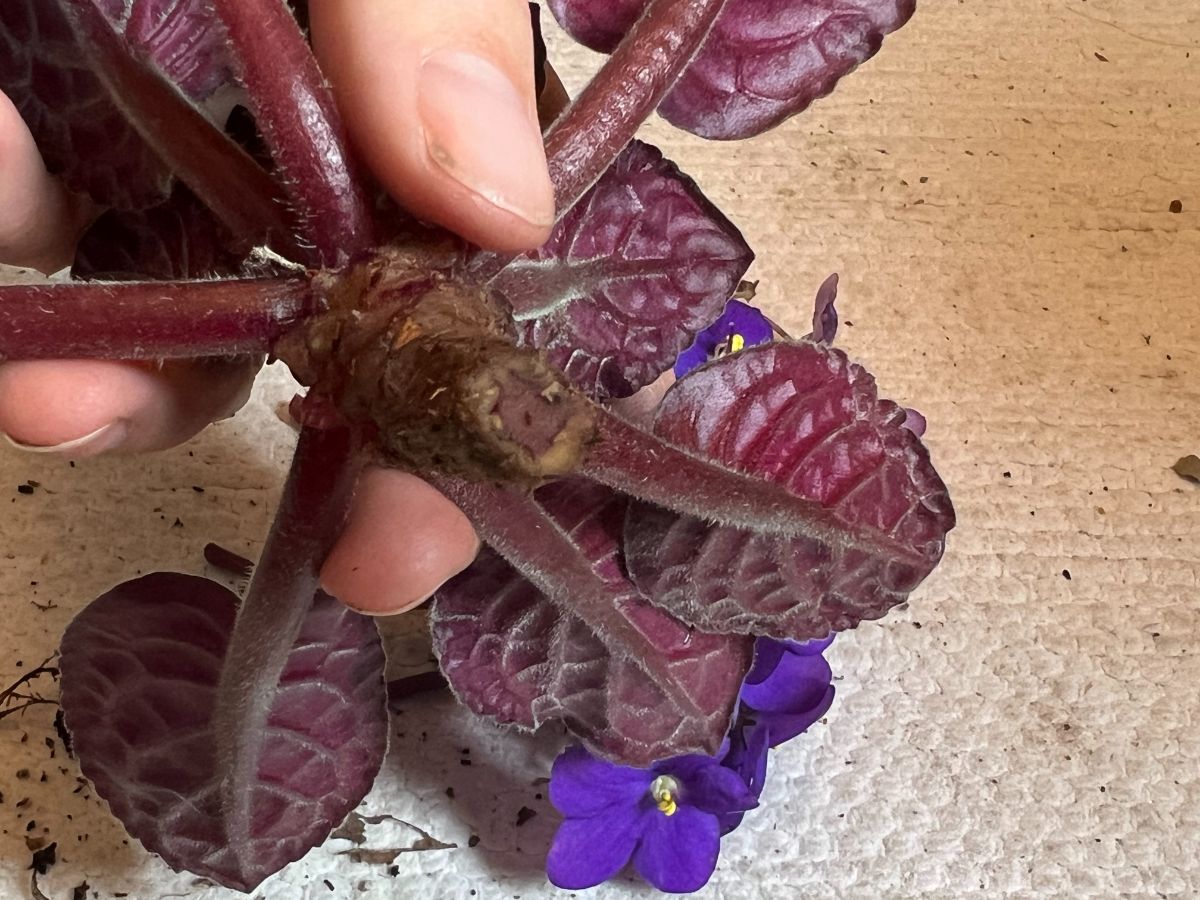
When you cut your plant loose from its roots, be sure to check the stem for rot. If the center is brown and punky – or worse, dried and powdery – then it’s rot. Another sign is leaves that turn brown, limp, and mushy.
Cut off the rot, moving slowly up the stem until you find the green stem again. If you still have the center leaves on your plant when you are finished, then your African violet has a fighting chance.
Pot it and bag it as detailed above.
Another Method for Rooting an African Violet Plant
Put a piece of plastic wrap over the top of a clear container and hold it in place with a rubber band. Poke a hole in the middle and pour in water. Set the stem into the hole, and make sure the stem can reach the water.
The plastic wrap keeps the rest of the African violet out of the water. Then, wait for the roots to form.
Just in Case, Propagate
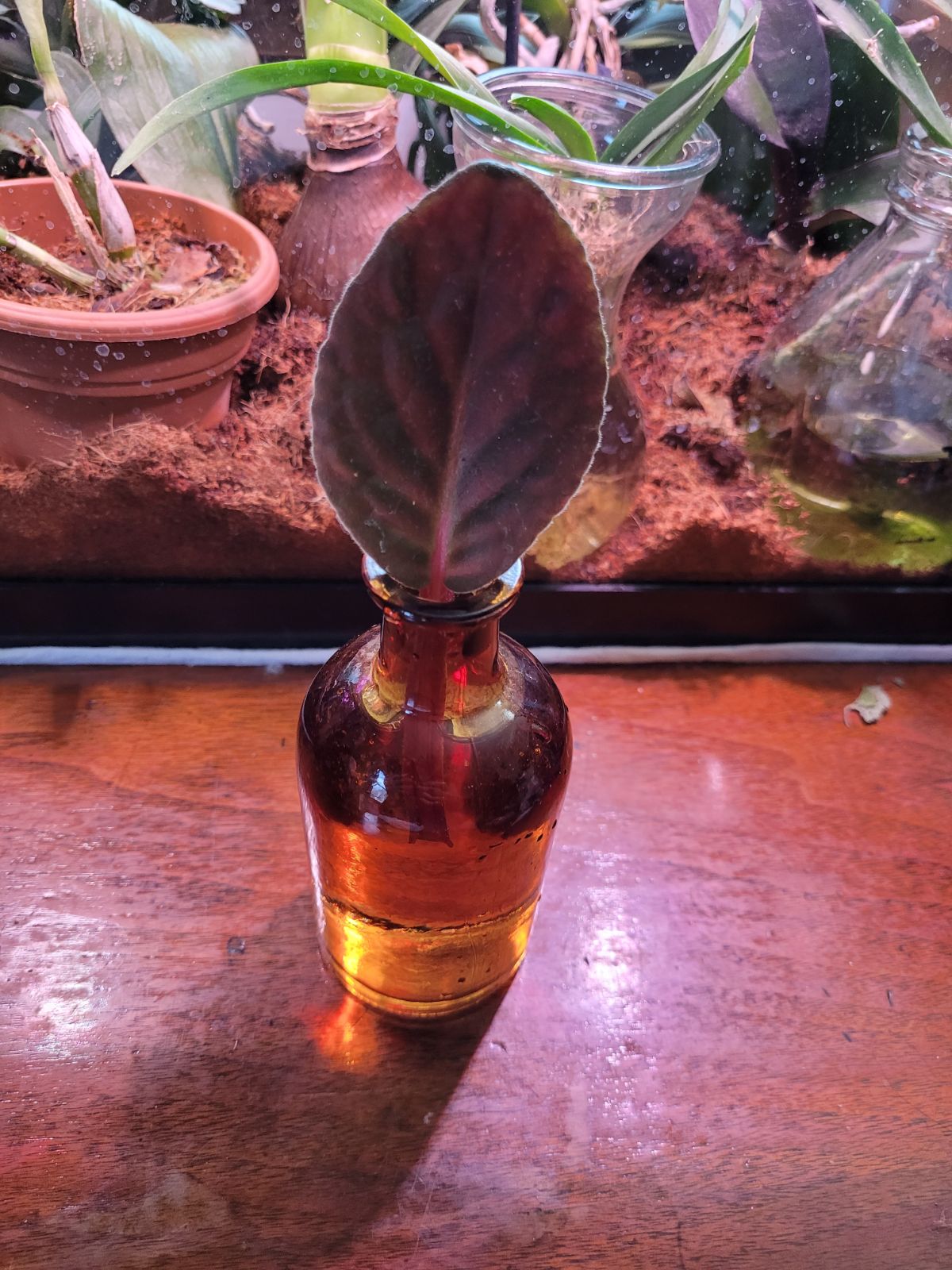
If your plant is very old or it’s in bad shape, then propagate a new violet. Pick a few healthy leaves off the plant and put the leaf stems in a little water. Let them sit for a month, replacing the water when necessary, until roots form.
Once the roots get over an inch long, pot up the baby plants, if your African violet fails for some reason, you’ll still have your violet.
You can also start your African violet leaves in the fluval stratum, which is kind of a neat and new substrate for plant propagation.
You can read the whole African Violets growing guide here.

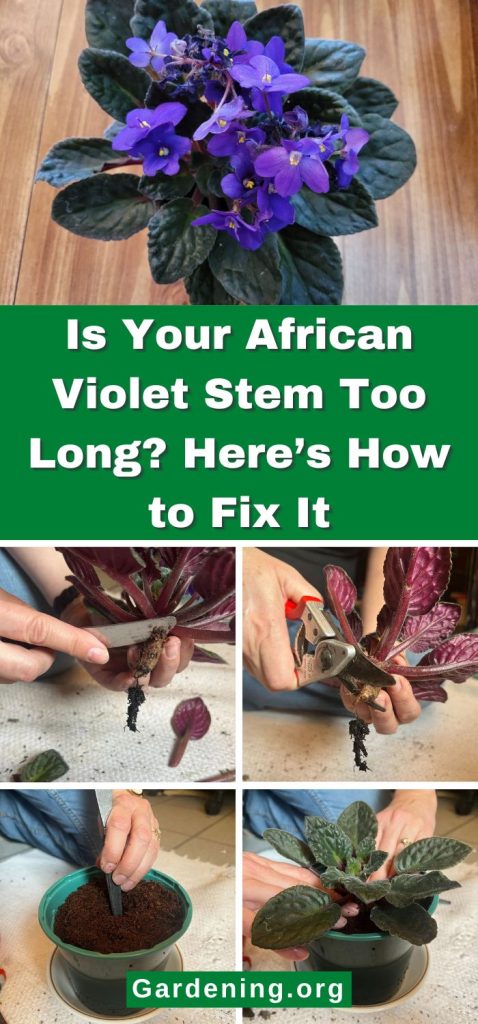
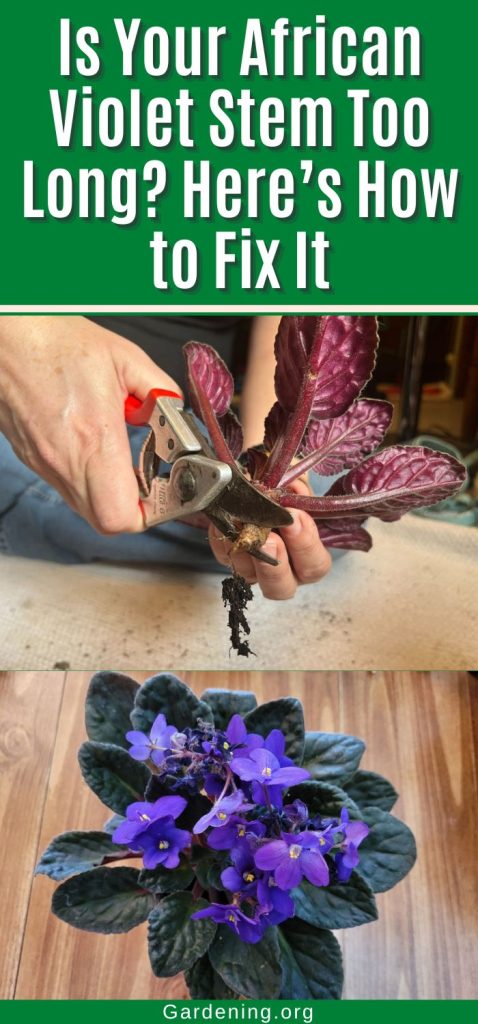
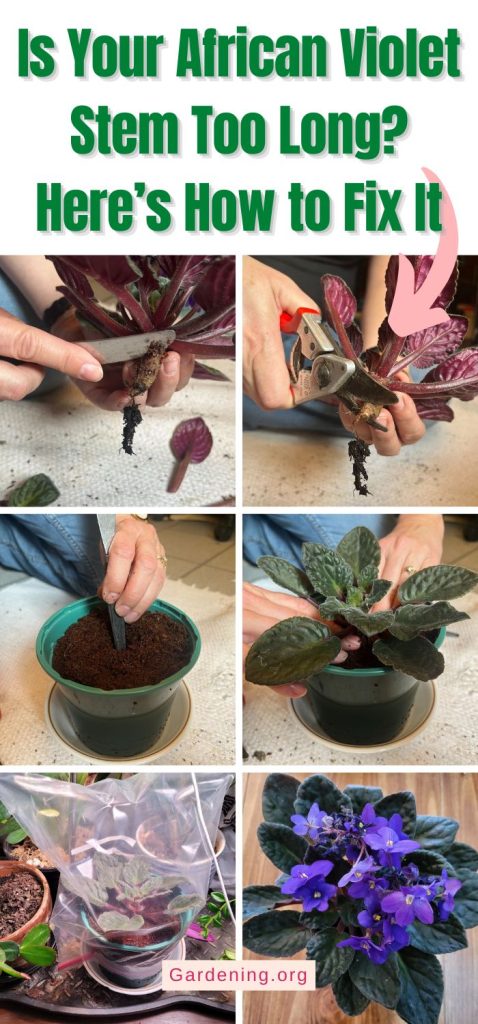
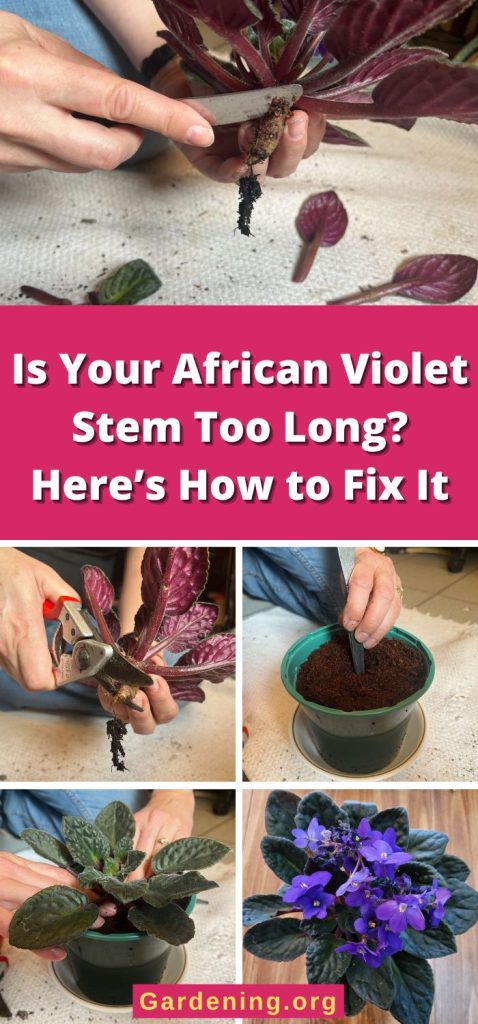
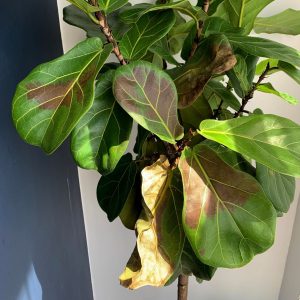



Lea Whitney
Can you tell me who sells African violets? For years the local grocery stores offered them, but I have been searching for one for a long time and never see them now. My sunroom would be a perfect place for one.
Mary Ward
I typically find them at grocery stores and at big box home improvements stores like Lowe's and Home Depot. Park Seed and a lot of others online have them. You might want to check out this site: https://www.violetbarn.com/